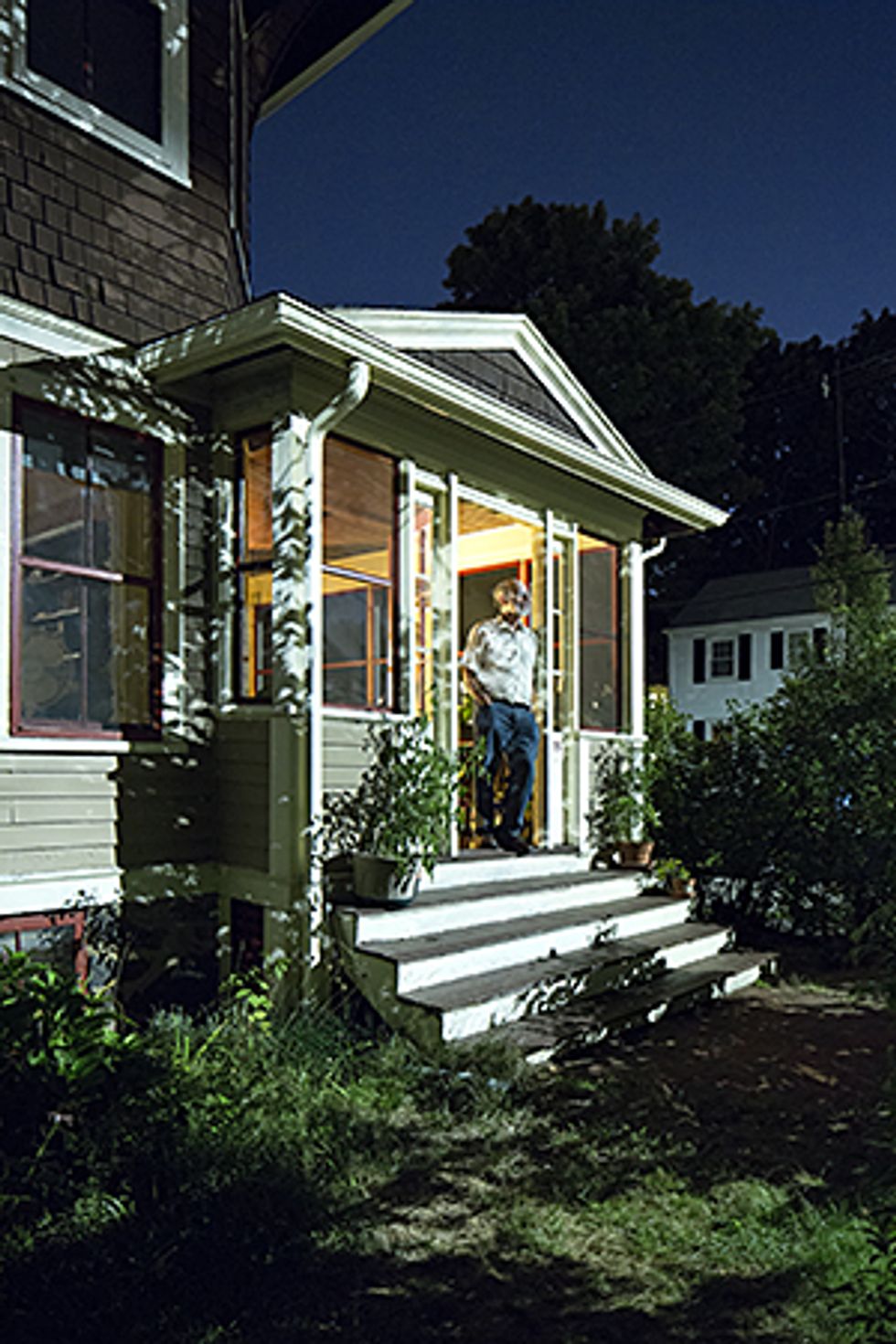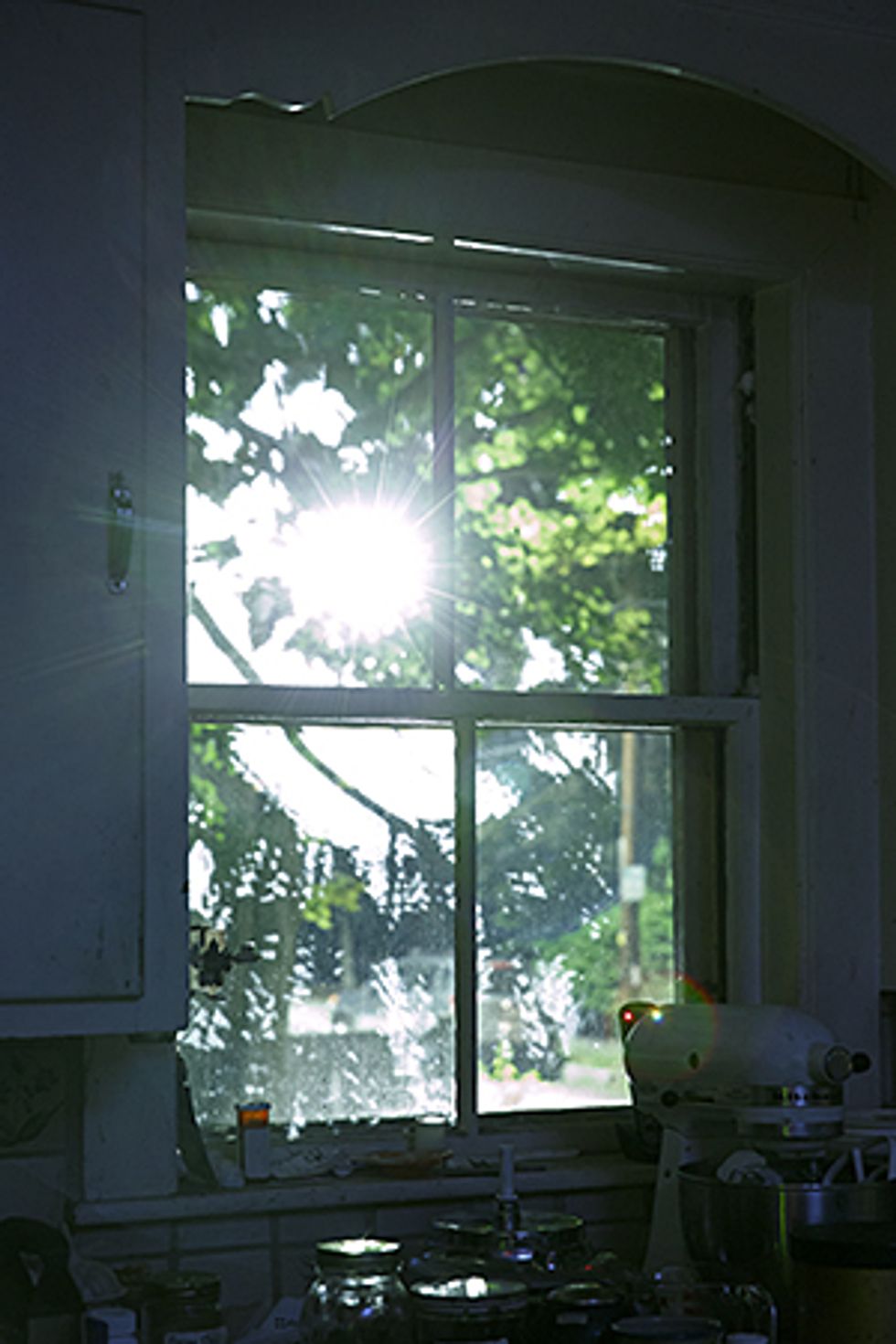LED Streetlights Are Giving Neighborhoods the Blues
Early adopters of LED street lighting are struggling with glare and light pollution
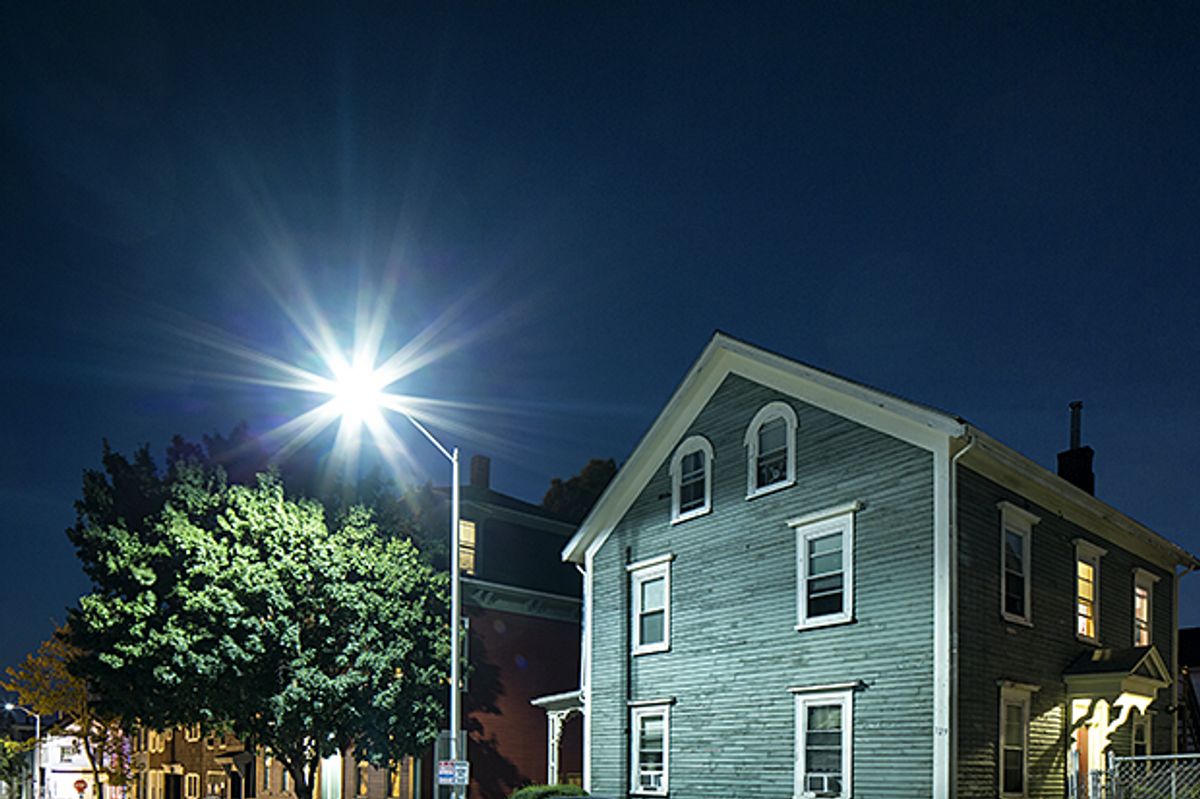
You may have noticed them going up in your town’s streets and parking lots: a new generation of pole-mounted lights that pour down a cool torrent of lumens from an array of light-emitting diodes. Like me, you might have welcomed this development. LEDs are, after all, the most energy-efficient lighting option on the market. They can last twice as long as ordinary sodium-vapor streetlights, and their prices have dropped to within range of the competition.
If the switch to LEDs had needed any more support, it came from growing evidence about climate change. In the United States, street lighting accounts for a whopping 30 percent [PDF] of all the energy used to generate electricity for outdoor lighting. Another 60 percent goes toward lighting parking lots and garages, and much of that energy is still produced by fossil-fired power plants. Consultants at the firm Navigant, in Chicago, have estimated [PDF] that the United States could save 662 trillion British thermal units—the energy needed to power 5.8 million typical U.S. homes for one year—by converting all remaining non-LED outdoor lighting to LEDs.
Armed with statistics like these, and a mandate to cut energy use wherever they can, municipalities across the United States have installed more than 5.7 million outdoor LED street and area lights. Other towns and cities in Canada, Europe, and Asia have added millions more over the past decade. Amid this rush to adopt outdoor LEDs, the U.S. Department of Energy (DOE) stressed energy efficiency as the biggest advantage of the new technology while cautioning cities to also consider light output and color quality. But now that ordinary folks have got an eyeful of those new lights, some municipalities are coming down with a case of the early-adopter blues.
For some, those first LED lights have been a fiasco. The harsh glare of certain blue-rich designs is now thought to disrupt people’s sleep patterns and harm nocturnal animals. And these concerns have been heaped on the complaints of astronomers, who as far back as 2009 have criticized the new lights. That’s the year the International Dark-Sky Association, a coalition that opposes light pollution, started worrying that blue-rich LEDs could be “a disaster for dark skies and the environment,” says Chris Monrad, a director of IDA and a lighting consultant in Tucson.
When my city of Newton, Mass., announced plans to install LED streetlights in 2014, I was optimistic. I’m all for energy conservation, and I was happy with the LED bulbs in my home office. But months later, returning from a week’s vacation in rural Maine, I was shocked to find my neighborhood lit by a stark bluish blaze that washed out almost all of the stars in the night sky.
Lately, lighting companies have introduced LED streetlights with a warmer-hued output, and municipalities have begun to adopt them. Some communities, too, are using smart lighting controls to minimize light pollution. They are welcome changes, but they’re happening none too soon: An estimated 10 percent of all outdoor lighting [PDF] in the United States was switched over to an earlier generation of LEDs, which included those problematic blue-rich varieties, at a potential cost of billions of dollars.
The episode invites a few questions: How did an energy-saving technology that looked so promising wind up irritating so many people? Why has it taken so long for the impacts of blue-rich lighting to become widely known? And why did blue-rich LEDs so captivate municipal lighting engineers long before better options reached the market?
Early innovations in street lighting were largely driven by brightness and convenience. The ancient Greeks and Romans lit terra-cotta oil lamps [PDF] to illuminate their streets. Candles and oil lanterns brightened preindustrial cities, with some 3,000 streetlamps said to be used in Paris in 1669. In the early 1800s, whale-oil lamps and lanterns began to give way to relatively inexpensive gas streetlights, which were first installed throughout London, Paris, and St. Petersburg, Russia.
Not until the 20th century did engineers start worrying about efficiency. Brilliant arc lamps were the original electric streetlights in the late 1800s, but it took more practical incandescent bulbs to persuade most cities to replace gas streetlights with electric ones. These were gradually phased out for even higher-efficiency successors: mercury-vapor lamps starting in 1948, and then high-pressure sodium in 1970.
The bluish LEDs were a stark counterpart to the orangish high-pressure sodium lights that came before them. Switching from the warm sodium lights to those LEDs was like going from a subtropical sunset to high noon at the equator.
The difference in color comes from the inner workings of a white LED. Individual LEDs are nearly monochromatic, which means they emit light of only one particular color, and in a very narrow band of wavelengths. The cheapest and most efficient way to make white light from an LED is to shine light from one or more powerful blue LEDs onto compounds called phosphors that absorb blue light and emit yellow light. This light combines with the remaining blue light from the LED to appear white to the eye.
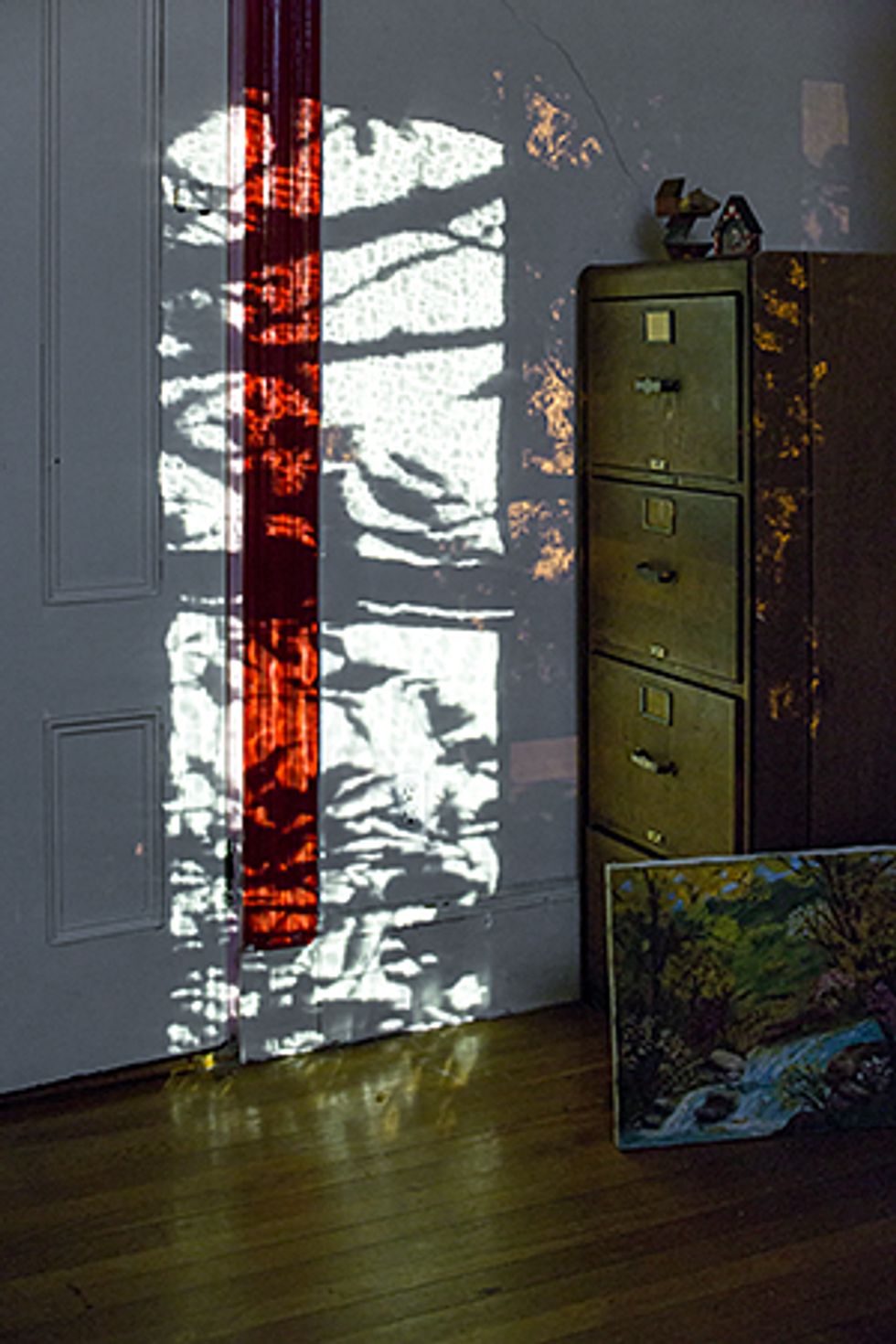
The resulting shade of white depends on the blend of blue from the LED and yellow from the phosphor. It’s measured on the color-temperature scale, which corresponds to the temperature (in kelvins) of a “black body,” which is an object that absorbs all the electromagnetic radiation it encounters and emits a similar mixture of colors. Early “white” LEDs developed in 1997 at Nichia Chemical Industries, in Japan, (now known as Nichia Corp.) were quite blue: They emitted more than 45 percent blue light, corresponding to 8,000 K. That’s even bluer than the color temperature of summer daylight, and it looks harsh to the eye.
Adding more and redder phosphors to a white LED makes its light look warmer and more agreeable to the eye—but at the cost of reduced efficiency. That’s because energy is lost in converting high-energy blue photons to lower-energy yellow and red photons. At home, though, people are sensitive to the color of lighting, so for indoor use many people choose LEDs of 2,700 to 3,000 K, close to the hue of ordinary incandescent bulbs.
Indoor LEDs reign supreme among light sources based on the savings they deliver: They are about five times as efficient as incandescents and up to 10 percent more efficient than compact fluorescents. They are rated to last anywhere from 2 to 50 times as long as competing bulbs. Though they’ve been screwed into only about 3 percent of indoor sockets in the United States, their rate of adoption is growing.
Outdoor lighting is a different matter, though, because it’s bought by municipal engineers charged with providing functional lighting at minimum cost. The cost-saving potential of LEDs appealed greatly to them, so they looked for the highest-efficiency bulbs. In June 2008, the DOE correctly noted that the most efficient white LEDs [PDF] of the time were those with a color temperature of 4,500 to 6,500 K. The agency also recommended matching color temperature to the bulb’s intended application.
Whatever their faults were, those blue-rich LED lights do save energy and money. My city of Newton, Mass., which has about 80,000 residents, expects to save US $3 million over 20 years after swapping its 8,406 sodium streetlights for 4,000-K LEDs, and avoid 1,240 metric tons of carbon dioxide emissions annually. Los Angeles anticipates saving $8 million a year after installing more than 150,000 LED streetlights, [PDF] while New York City hopes to recover $14 million a year by replacing the city’s 250,000 streetlights with LEDs.
Outdoor LEDs also illuminate streets more efficiently than sodium not so much because of their superior lumens per watt but because they are highly directional, meaning that they focus light mostly in one direction. Sodium lamps are gas-filled bulbs that emit in all directions. More than half of that light must be redirected downward by reflectors or lenses, reducing the lamps’ illumination efficiency.
A much trickier factor to quantify for street lighting is how the difference in color temperature between LEDs and high-pressure sodium affects the way we see at night. Our ability to see in a range of environments comes from two sets of sensors: a group of receptors known as cones that show us color in daylight, and night-time sensors called rods that are very sensitive to bluish light but are less sensitive to red.
Our visual sensitivity shifts as light grows dim because rods and cones respond most strongly to waves of different lengths. The collective response of cones makes the human eye most sensitive in daytime to wavelengths of green-yellow light in the middle of the visible spectrum. Rods have a peak response to shorter blue-green wavelengths. Blue-sensitive cones, which are greatly outnumbered by other types of cones but are thought to play a role in sensing brightness at night, peak at wavelengths that produce indigo light.
The result is that at night the blue-rich light from an LED streetlamp looks brighter to the eye than the orangish light from a high-pressure sodium lamp—even if the two emit the same number of lumens, which are measured on a scale based on the eyes’ daytime response.
Given these facts, some experts touted bluer light for LEDs, noting that the relatively high color temperatures could enhance visibility at night. Some suggested that the use of bluish LEDs would let us see so much better at night that we could turn down the intensity of the lighting.
Yet Ron Gibbins, director of the Center for Infrastructure-based Safety Systems at the Virginia Tech Transportation Institute, says his experiments don’t support that idea. He has found that drivers’ eyes do not fully adapt to the dark, and thus would benefit little from the higher sensitivity of rods to blue light.
Other peer-reviewed studies have found that portions of the retina can adapt to different light levels at the same time. This suggests that rods focused on a road’s periphery may be better adapted to lower light levels, and therefore stand to benefit more from blue-rich lighting than those focused on the center line.
Meanwhile, evidence has been mounting that increasing the blue content of outdoor lighting can worsen its biological impact on both humans and wildlife, leading some to question the wisdom of putting LED streetlights in their neighborhoods.
We have long been adding light to the outdoor environment. But only in the past decade or two have experts become aware of the consequences for wildlife, human health, and residents’ view of the night sky, says Chris Luginbuhl, a retired astronomer active in the Flagstaff Dark Skies Coalition, in Arizona.
In 2014, Luginbuhl and his colleagues showed that because the human eye is more sensitive to blue and green light than yellow and orange, some white streetlights can contribute up to four times as much nighttime sky glow as the amber-hued sodium lamps of the same luminous output. Worse, John Bullough, director of the transportation and safety lighting programs at Rensselaer Polytechnic Institute, in Troy, N.Y., found that the impact of “discomfort glare”—which may make it hard for the eye to focus on objects—peaks in the blue part of the spectrum that was abundant in early LEDs.
It’s more than an inconvenience. Research over the past 15 years has shown that humans and other animals have nonvisual receptors in their eyes containing a pigment called melanopsin that senses blue light. Our bodies use that response to control our diurnal cycles, waking in the morning as light increases, peaking in activity at midday when it is most intense, and winding down for sleep at dusk. Though the overall amount of light in a person’s environment has the greatest impact on circadian rhythms, this blue light response is an important factor.
Blue light at the wrong time can disrupt sleep by suppressing production of the sleep-inducing hormone melatonin. You might have noticed, a couple of years ago, the news that looking at your smartphone or other LED-lit screen before bedtime was a bad idea. Much the same is true of blue-rich outdoor LEDs: Their impact on the circadian rhythms associated with sleep is estimated to be five times greater than that from conventional streetlamps.
Ecologists have also long known that the color and intensity of nighttime illumination can affect such wildly diverse creatures as bugs, bats, and birds. Robin Somers-Yeates at the University of Exeter, in England, found in 2013 that blue lighting attracts nocturnal moths, which creates a fluttering buffet for bats. And an important group of slow-flying bats, named Myotis and known as mouse-eared bats, instinctively avoids the light because other, faster-moving bats prey on them, says Gareth Jones of the University of Bristol, in England.
One of the best-understood, and most serious, impacts of bluish lighting is on endangered sea turtles. They evolved to scurry toward the moonlit sea when they hatch, but bluish lights at coastal resorts draw them inland, to be stranded or caught by waiting predators. Electric lights can even lure them back to land once they reach the water. To protect the turtles, the Florida Fish and Wildlife Conservation Commission now limits outdoor lighting visible from sea turtle nesting zones to amber, orange, and red wavelengths longer than 560 nanometers. LEDs are fine, but only if they follow this wavelength restriction.
A European Union–funded consortium called the Loss of the Night Network is supporting research on the biological impact of LEDs and other outdoor lighting. But well-controlled ecological studies can take years of painstaking observations, and at the moment there is precious little research on the impact of different color spectra on wildlife.
In the meantime, human beings are making their own displeasure known based on health, environmental, and quality-of-life concerns. Some residents of Brooklyn, Seattle, and Houston have joined the International Dark-Sky Association (IDA) in fighting installations of blue-rich LED street lighting. And in Canada, public outcry over the city of Montreal’s $84 million plan to replace existing streetlights with LEDs centered on light pollution and health impacts.
In response to questions that I posed to the DOE about the early rollout of blue-rich LEDs, the agency says it does not recommend specific color temperatures for LED street lighting and that it provides information about energy efficiency ratings and color temperatures only to allow buyers to make informed choices. Unfortunately, the right choice is not always clear—just months after the city of Davis, Calif., installed 4,000-K LED streetlights in 2014, a high volume of complaints prompted officials to spend $350,000 to replace 650 of those new lights with less-efficient 2,700-K LEDs.
LED lighting manufacturers have taken notice of the public rumblings about blue-rich LEDs. This year Cree, one of the top U.S. makers of LED lighting, began offering 3,000-K LEDs that could generate the same number of lumens per watt as 4,000-K LEDs (modern sodium lights have a color temperature of 2,100 to 2,300 K). Cree’s breakthrough involved adding a new high-efficiency red-emitting LED to the standard blue LED with yellow phosphors. As it turns out, producing red light directly from the new LEDs generates more lumens per watt than adding red-emitting phosphors to the standard yellow-emitting ones in a white-light LED.
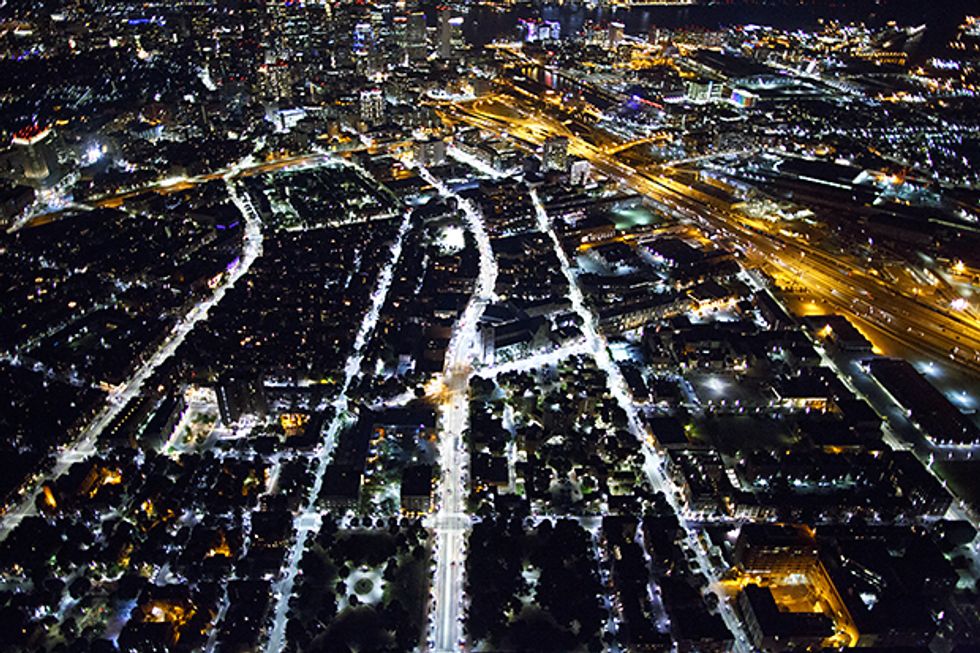
Erik Milz, Cree’s vice president of product marketing for outdoor lighting, says the reddish LEDs give the warm appearance of high-pressure sodium lamps, but with the long lifetime and high efficiency of LEDs. This technique does not eliminate the blue but reduces it; the DOE calculates that the output of 3,000-K LED lamps is about 20 percent blue, compared with 30 percent for 4,000-K LEDs and 10 percent for high-pressure sodium bulbs.
“Communities like the warmer light,” says Patrick Roche, energy coordinator for the Boston-based Metropolitan Area Planning Council. And 3,000 K is good news for the IDA, which, along with the Loss of the Night Network in Europe and the American Medical Association, recommends that color temperature as the maximum.
The city of Tucson, with about a billion dollars’ worth of research telescopes within 75 miles, is now installing 3,000-K LEDs. And for Southern California, Monrad’s consulting firm is working on a regional street-lighting plan for a dozen communities near the Palomar Observatory. The upper limit for that project is 3,000 K, but he is pushing for LEDs with a color temperature of 2,700 K, a typical color for an incandescent bulb.
Monrad has another design trick: mixing LEDs of different colors in the same fixture. He combined amber LEDs with 3,000-K LEDs for a school in southern Arizona. The white LEDs switch off after workers go home, and the amber lights switch on to provide security with minimal impact on astronomers and wildlife.
Similarly, Cambridge, Mass., has installed a wireless control system to dim its new LED streetlights after most traffic stops. In addition to reducing lighting during the wee hours, the controls let city workers dim lights when residents complain.
Adaptive headlights, used on some European cars but not legal in the United States, could further reduce the need for street lighting by letting drivers use high beams more often to see farther at night. These systems detect oncoming cars and dim the part of the high beam aimed in their direction while leaving the rest of the road fully illuminated. “It could change how we determine what we need in road lighting,” says Rensselaer’s Bullough.
Another promising approach is developing optical systems that reduce the intensity of light from the LED device before directing it toward the street. A Cree offering called WaveMax uses transparent waveguides to collect light from LEDs and deliver it to ports that diffuse the emitted light. The effect is similar to that of a frosted incandescent bulb, which spreads light from the bright filament across the bulb’s surface.
The challenge with LEDs, as with so much other energy-saving technology, is to improve energy efficiency without creating more problems for humans and the nonhuman environment. Fortunately, LED technology is extraordinarily flexible. Its wide range of colors, and the ease of using adaptive techniques, will let us develop street lighting that illuminates a neighborhood with minimal impact on wildlife and residents.
In retrospect, government agencies such as the U.S. Department of Energy and many municipalities pushed a wholesale shift to the first generation of outdoor LEDs more aggressively than they should have. But they were hardly alone. Most of us who grew up with streetlights tended to think of them as uninteresting utilitarian objects, when we thought of them at all. The turbulent early years of LED lighting have forced us to take another look at what nighttime lighting could—and should—be. Because of that, the future looks brighter, and it will also be much easier on the eye.
This article appears in the October 2016 print issue as “The Early-Adopter Blues.”
This story was corrected on 27 September 2016 to better characterize the work of Luginbuhl and colleagues.
